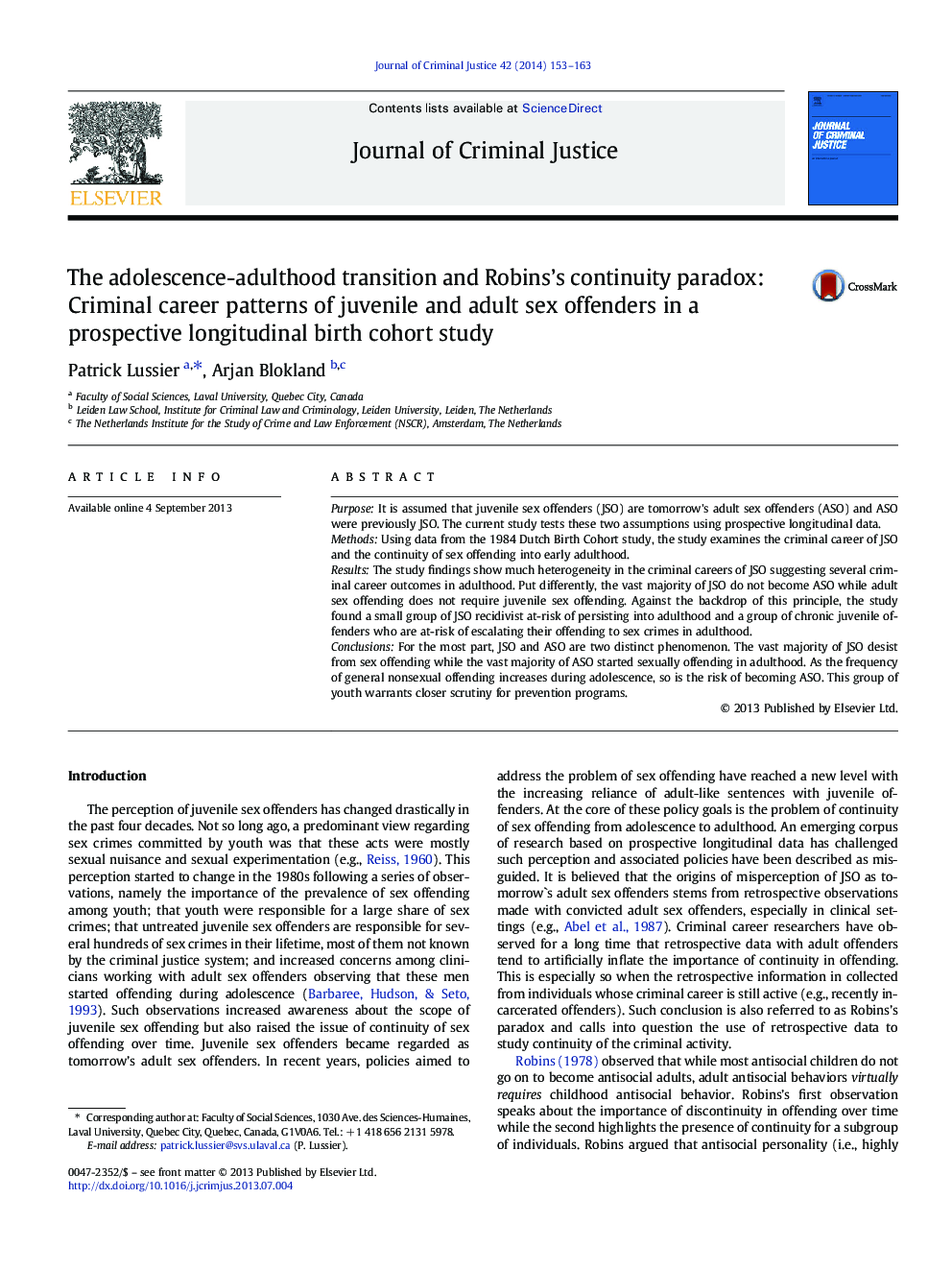| Article ID | Journal | Published Year | Pages | File Type |
|---|---|---|---|---|
| 882807 | Journal of Criminal Justice | 2014 | 11 Pages |
•Juvenile and adult sex offending are two distinct phenomenon.•Vast majority of juvenile sex offenders do not become adult sex offenders.•Vast majority of adult sex offenders were not juvenile sex offenders.•Heterogeneity is found in the criminal career outcomes of juvenile sex offenders.•Two patterns of adult-onset sex offending were found.
PurposeIt is assumed that juvenile sex offenders (JSO) are tomorrow's adult sex offenders (ASO) and ASO were previously JSO. The current study tests these two assumptions using prospective longitudinal data.MethodsUsing data from the 1984 Dutch Birth Cohort study, the study examines the criminal career of JSO and the continuity of sex offending into early adulthood.ResultsThe study findings show much heterogeneity in the criminal careers of JSO suggesting several criminal career outcomes in adulthood. Put differently, the vast majority of JSO do not become ASO while adult sex offending does not require juvenile sex offending. Against the backdrop of this principle, the study found a small group of JSO recidivist at-risk of persisting into adulthood and a group of chronic juvenile offenders who are at-risk of escalating their offending to sex crimes in adulthood.ConclusionsFor the most part, JSO and ASO are two distinct phenomenon. The vast majority of JSO desist from sex offending while the vast majority of ASO started sexually offending in adulthood. As the frequency of general nonsexual offending increases during adolescence, so is the risk of becoming ASO. This group of youth warrants closer scrutiny for prevention programs.
